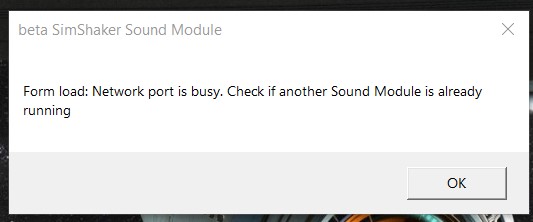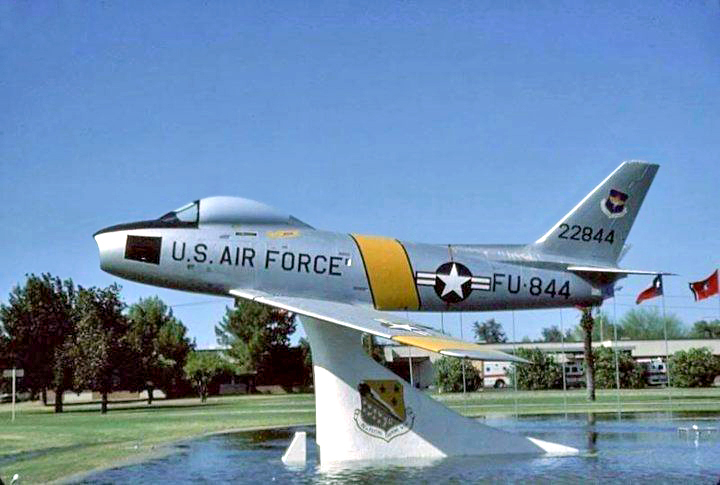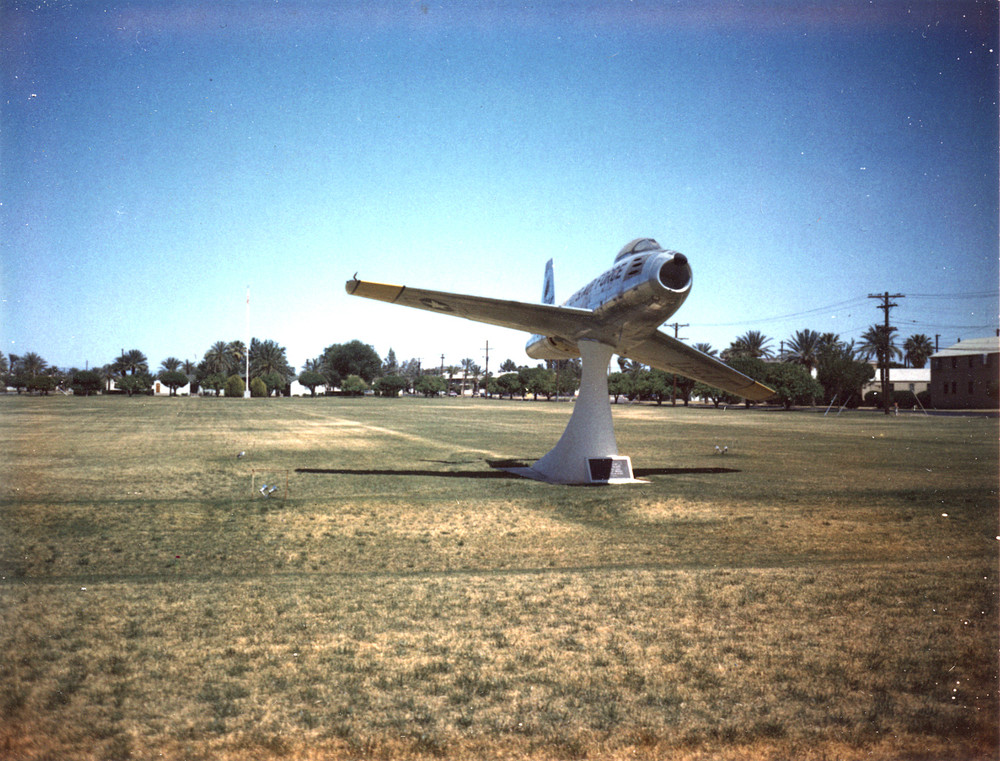-
Posts
338 -
Joined
-
Last visited
Content Type
Profiles
Forums
Events
Everything posted by Bob1943
-
Here are 3 pics of one of the wing pylons on my F-100 at Phan Rang AB in South Vietnam in 1970. This shows the wires through the nose fuses on both a 500 & 750-lb high-drag bomb. The other end of the wire is connected to the wing pylon and that wire stayed connected to the pylon after release. On RTB from a strike mission, each flight member would always slide under his wingman's plane to make sure all the wires were still attached to the pylons. If a wire was missing, chances were that you released a dud that did not arm. Once the bomb was released, the wire was pulled free of the nose spinner fuse. I don't remember what time interval we used for the bomb to become armed once it was released. We also had tail fuses and the option to select "Nose" or "Nose/Tail". If I recall, we always used "Nose/Tail" so we had a backup fuse in case one failed.
-
Get a powered USB hub. I have this Anker unit with 10 USB ports. https://www.anker.com/products/variant/USB-3.0-SuperSpeed-10-Port-Hub-/68ANHUB-B10A Only one cable to connect from the hub to a USB 3.0 port on the computer. Plug the electrical wire into an electric socket and you are good to go I use this for connecting my Warthog stick & throttle, CH rudder pedals, 2 Thrustmaster MFDs, and a dedicated sound card that runs my transducers. Bought this hub over a year ago and have not had any problems.
-
Here is a screenshot that I took while landing the F5 in Sept. 2020. Heat blur is visible. This was after an in-flight start.
-
How do I get this problem reported as a Bug Report?
-
So I guess it was referring to the sound module on my motherboard that runs my speakers. What confused me was that I have always run 2 sound modules, one for speakers and one for SSSM, and I have never seen that message pop up before. Whatever was triggering the message has apparently been resolved since I did not see it yesterday when I started up DCS with SSSM & SSA. Thanks for the reply. Edit: Sorry for my mis-interpretation of what was happening, took a couple days for this to sink in. The Note was telling me that I had inadvertently opened 2 instances of SSSM, not that I had 2 sound cards running for my speakers and bass shakers.. Had not considered that a second instance of SSSM was apparently running, since I have SSA open SSSM automatically.
-
The last few times that I have loaded SSSM (beta) & SSA with DCS, I have noticed the attached "Form Load" note appearing. No idea what this means. I run SSSM through a second USB sound card, which is selected in the Settings box in SSSM. My external speakers run from the onboard sound module on my motherboard. Does anyone have any idea as to why this "Form Load" message keeps popping up? The SSSM software seems to be running my bass shakers ok, plus my external speakers run fine.
-
Yes, I have noticed that the F5 attitude indicator easily gets out of sync with the true horizon, after doing any significant banking or climb/dive maneuvers. I flew the T38 in USAF pilot training, it did not have that problem. So, I think it is a simulation bug that needs fixing.
-
Just checked air versus ground start on the F5. You are right, no heat blur with air start, but do have heat blur with ground start. That should be an easy bug for ED to fix. Update (1/22/2020): Today I am not even getting heat blur in the F5 using a ground start.
-
Engine "heat blur" used to work fine on all my planes. Recently I have noticed that is no longer visible on either the Low or High "Heat Blur" setting. Anyone else have this issue? Any ideas as to what the problem may be?
-
Yes, the RCA jacks would go into the "Input" connection on your amp, i.e., you are feeding the SimShaker telemtry signal "into" the amp in order for it to be amplified before going to your bass shaker. However, it appears that you have a single-channel mono amp, not 2-channel stereo amp. I'm not sure how the 3.5mm jack with 2 RCA stereo jacks might work with your mono system. Maybe you would need a 3.5mm jack with a single RCA plug on the other end.
-
Yep, get a second USB sound card to handle the vibration telemetry signals from SimShaker. I use the $14 UGREEN USB audio adapter (https://www.amazon.com/UGREEN-External-Headphone-Microphone-Desktops/dp/B01N905VOY) I have a powered 10 port USB hub connected to my computer USB port. All my HOTAS hardware is connected to that USB hub. The USB cable from the UGREEN adapter also plugs into that USB hub. Then get a "3.5mm Plug Male to 2 x RCA Male Adapter Cable". The 3.5mm jack goes into the green connector port on the UGREEN module and the RCA jacks go to the left-right "Line In" connections on your amp. When you start up the SimShaker software, select the USB sound card and you should be good to go.
-
Might want to post this in DCS: F-86F Sabre This is the F-5 sub-forum.
-
Second that comment. I have the same issue with the Warthog stick. I see some folks have recommended getting a lighter Warthog spring. I am a former USAF pilot and have performed AAR in the F-111, F-100 and A-37. The control sticks in the real airplanes were nothing like the Warthog in terms of feel and making small, precise control movements. My first attempts at AAR in DCS were extremely frustrating failures, given that I had done it so easily in real life. Part of the problem is also the lack of a wide field of peripheral vision that our computer screens create.
-
I have been flying an F-16 Thunderbird for the past year. Screenshot attached.
-
Small point here. I have both, but I give bonus points to the F-16 for the unobstructed canopy view versus that annoying front canopy frame in the Hornet. With the limited view we get of the world on our computer screens, it is really nice to have that unobstructed view from the F-16 cockpit, especially during AAR re-fueling.
-
Works fine on Stable version. Did you switch to an external view to see if it deployed?
-
Get a powered USB hub. I have this Anker unit, works great. All of my flight sim hardware is plugged into it. https://www.amazon.com/Upgraded-Anke.../dp/B005NGQWL2 I always plug the same hardware (stick, throttle, etc.) USB plugs into the same slots on the Anker unit. I even have the ports on the Anker unit labeled, i.e., stick, throttle, rudders, MFDs, etc. Seems to keep everything straight when I open DCS.
-
Yes, that old one has been at Veterans Memorial Park in Chandler a long time. I think it was there back in 1967 when I was at Williams. It's tail number is 51-6261.
-
In my post #5, I had assumed that the F-86 at Williams AFB had been moved to Chandler, AZ after Williams was closed in 1993. I got curious about that and went to the "List of surviving North American F-86 Sabres" website and found it's tail number. That same F-86 is now on display at the Illinois ANG base at Springfield, ILL. It now sports a new paint scheme but still carries the same tail number. Here is another picture of it when it was still at Williams, and, pictures of it at its new location in Springfield.
-
I went through USAF pilot training during 1967-68 at Williams AFB in Arizona. This Sabre was on a pedestal at the entry to the base. I took this picture in May 1967, The base was closed in 1993 and converted to civilian use. At that time they moved the Sabre. I think it may have gone to nearby Chandler, AZ.
-
I use Button 19 on my Warthog stick for zooming in & out, Forward press zooms-in, aft press zooms-out. A press to the right (position 16 on Button 19), instantly returns me to a normal cockpit view when I am viewing left-right-up-down with the TMS button.
-
Originally posted by garyscott View Post Off the top of my head, NTTR map, T.O. Nellis, head east over Lake Mead and look for Hoover Dam. The canyon immediately beyond the dam is a fun bit of flying, use the dam as the entry point, follow the river until the terrain opens out and gets flatter, then loop back up the river to the dam and exit. thx Gary, i just bought that map Don't forget to fly under the bridge just below the dam!
-
Trimming your plane in the air should be "second nature" as part of your pilot skills. When I was flying the F-100 in Vietnam (1970), I would be doing single-release drops on every pass. Our typical loadout would be 2 external wing-mounted fuel tanks on the center wing pylons, then 500 to 800-lb bombs/napalm on each of the inboard and outboard wing pylons on either side of the fuel tanks. We would start our drops from the outboard pylons and work our way to the inboard pylons. So, with every single drop I made, my plane became instantly asymmetrical, as I was making a 7G pull off the target and jinking right & left. Trimming off the asymmetrical stick force was pretty much automatic, i.e., without even thinking about it.










